
2023
Paper Accepted for Publication
In my 5th semester of college, I collaborated with a design team to develop an IoT-based tangible chess board using Arduino and movement-based triggers. The project offered an immersive and interactive chess experience, seamlessly blending the physical and digital worlds while encouraging strategic
Determinants impacting stunted growth patterns in India.
Timeline
October 2022, 4 weeks
My Team
3 members
My Focus
IoT I Experience enhancement I Life- sized
Project Type
Tangible Interaction Design
"Crafting Moves, Shaping Minds”
Checkmate is beyond an interaction; it's a meticulously documented journey, where a life-sized chess board meets IoT and tangible experiences. Delve into the world of engaging chess education and fun learning, captivating novice players and school students alike.
To make learning chess a blast!
Get ready for a chess experience like no other! 🏆♟️
What's the secret?
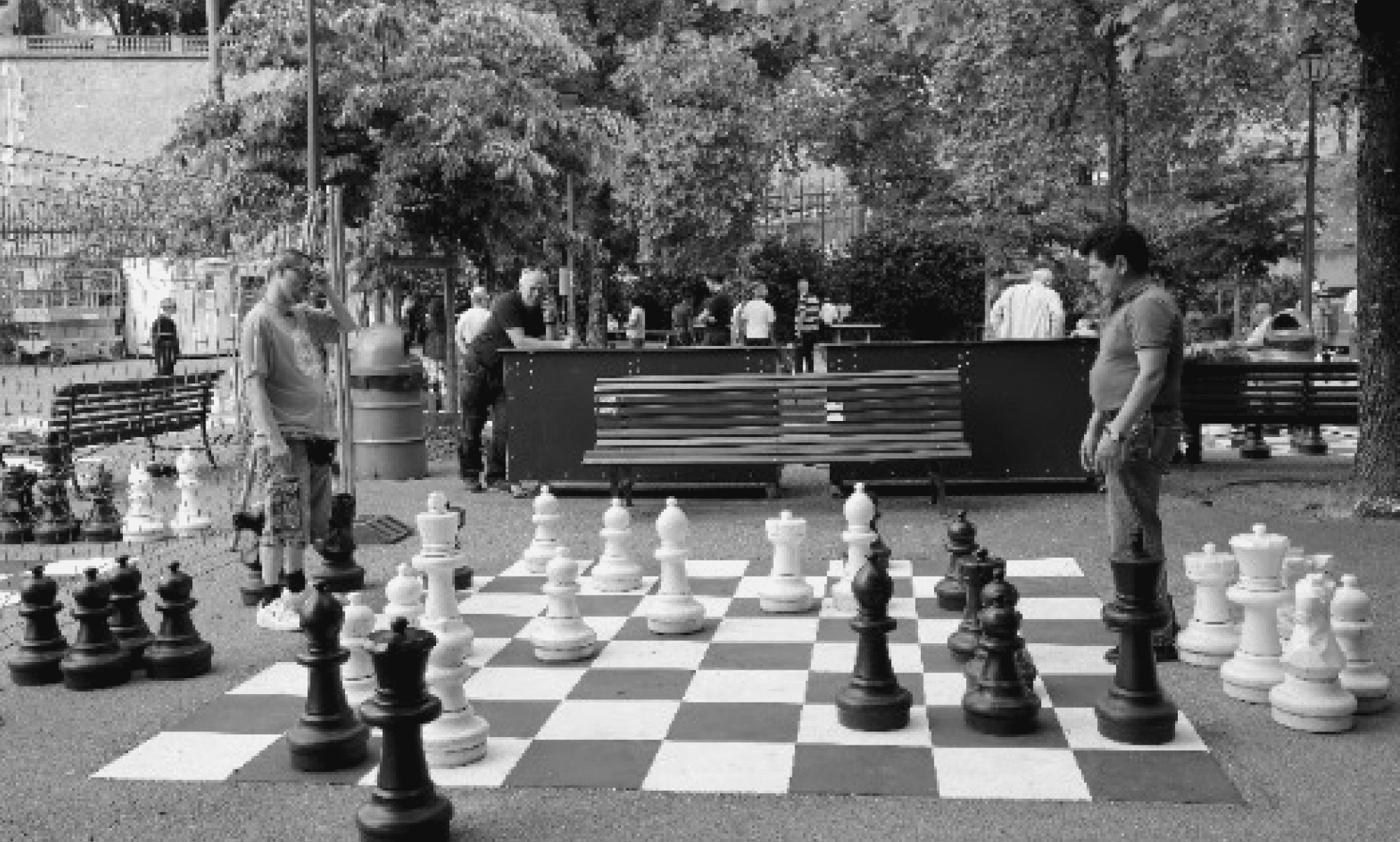



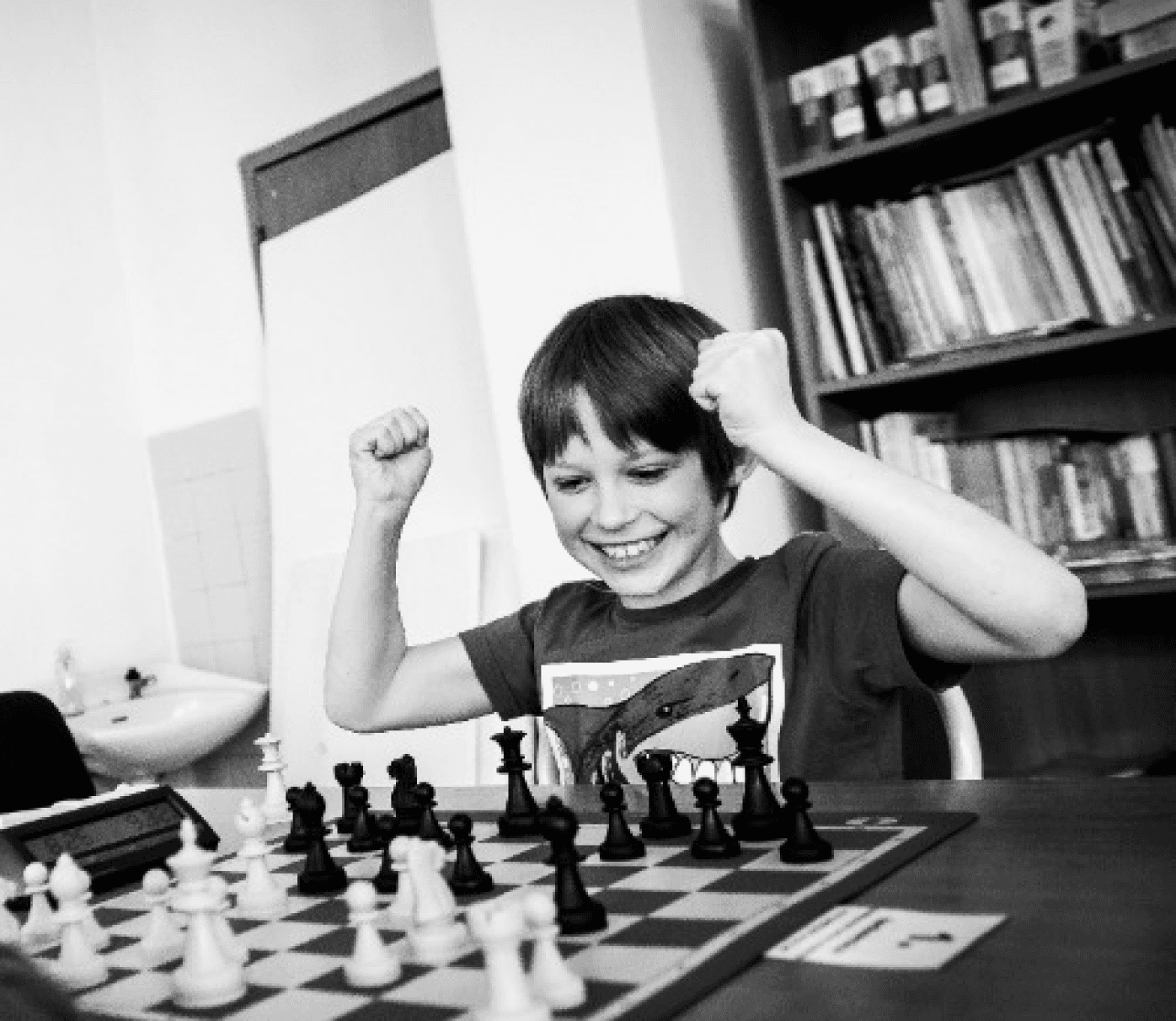

Our mission?
We wanted to make something special that everyone would love, even those new to chess. So, we put our heads together and came up with lots of fun ideas and clever ways to make the chess game come alive!
Our secret sauce?
We found a great balance between learning and fun, making chess enjoyable for everyone, no matter how skilled they are! Let's celebrate the love for chess and the excitement of learning! 🎉🏆🤩
😎
The Game Plan
Explore
Enhance
Elevate
Design
Confused due to visuals?
Exciting things coming, keep scrolling!
🫣
Success isn't solely about winning, but it’s about the path you take
🏞️
But kaise kare?🤔
While capturing the excitement of traditional chess
Every move carries the weight of strategy and intellect
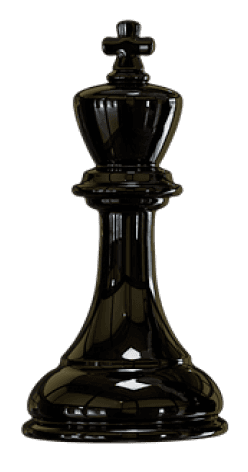
And in the world that is increasingly digital we wanted to blend physical and virtual
🤳
May be by crafting an environment for them
Where chess becomes an adventure that speaks to the heart of newcomers and seasoned players
🗺️

By ensuring that it resonates with their emotions at every interaction for a delightful expereince
🙄🤕🤔🫣😊😀😎
The research mainly was carried out in these 4 phases
Role of chess in skill acquisition and its significance in educational success
Consortium between chess and cognitive and non cognitive skills and mathematics
Reasons behind using giant sized chessboards in schools
Introducing Iot in life sized chessboard
What insights were gained through desk research?💻
Non-Cognitive factors matters
🤯
Chess and numerical aptitude
🔢
Benefits of giant sized chessboard
IoT empowering chess learning
🌐
We interviewed 10 users from 2 user groups. We wanted to cater to their specific needs and preferences, ensuring a chess experience like no other. We invited young minds to play this strategic game and learn important lessons while having fun.

Novice player
School students

But.. how does chess affect the school children in terms of
🤔
Cognitive abilities
information processing
perception
attention
memory
problem solving
🤨️
Non-Cognitive abilities
social skills
discipline
patience
self-control
Strengthening these skill sets through chess may prove beneficial for children’s academic performance
Friendly Competition
Desire for Excitement
Skill Improvement
curious minds
Interactive Learners
Maya is a bright 12-year-old student currently in the 7th grade. She has always been curious and loves exploring new activities. Recently, she discovered chess at school and finds the game intriguing. However, the traditional chess setups and learning methods feel somewhat disconnected from her dynamic and interactive learning style. Maya is looking for a more exciting way to delve into the world of chess, where she can explore the game as if it were a thrilling puzzle. She is eager to improve her chess skills, understand various strategies, and challenge her classmates in friendly matches.
Maya
School Student - Curious Learner

But what do they feel?
Novice Players
Feels lost when learning
Overwhelmed by Complexity
Pattern recognization
Eager Learners
Yearning for Guidance
But what do they feel?
Alex is a 25-year-old college student who has recently developed a keen interest in chess. As a novice player, Alex is eager to learn the game's fundamentals and basic strategies. However, the complexity of chess can sometimes feel overwhelming, and finding engaging resources tailored to beginners has been a challenge. Alex is enthusiastic about improving their chess skills and enjoys the idea of a fun learning experience that makes the game more approachable. Having nobody to regularly practice with is another pain point for Alex.
Alex
Novice Player - Chess Enthusiast

🎯
Our primary mission was to enchant and engage the minds of
Let's explore the thoughts, actions, words, and emotions of beginners and children.
Will I come out as a dumb person if I fail learn it quicker?
Will I forget the moves over a course of time?
I need assistance to learn chess
Want to analyse my own moves
Don’t know where to start from
Will people jugde me if I don’t learn chess on time
Will people jugde me if I don’t learn chess on time
Want to learn chess
How much time will it take for me to learn chess?
Want to feel included while others are playing
Set up a game
Strategizing
Calculation
Patter recognisation
Watches online videos for help
Navigate the game
Moving the pieces to make a move
Considers the direction of movements of pieces
Analysis of their moves
Visualizing the game
Direction of moves is confusing
Am i the only one who doesn’t know how to play?
Do I have that much patience
Can my decision making be more effective?
Am I intellegent enough to be good at this game?
Will I be able to remember the moves of every piece?
Do I have that much patience
Want to be better at pattern recognitions
Need more practical experience
Information processing Ability
Don’t want to feel the pressure of time
Want to feel independent while doing simple things
Feels lost when not following rules
Excited to learn new skills and apply them
Want to learn new things
Want to stay calm is it’s their strength
Wants to operate in an organized manner
Piece recognization is difficult
Feels captivated by the game
Feels lost when doesn’t know something
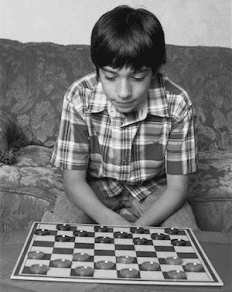
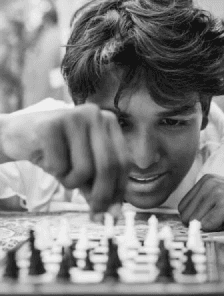
Says
Does
Feels
Thinks
Key Observations
👉
Board Visualization
Visualizing and anticipating future moves is challenging for children, especially those who struggle with spatial awareness or have difficulty visualizing concepts
👉
TACTICAL PLANNING
Children struggle to think ahead and plan their moves, or they may struggle to identify the best strategies for a given situation
👉
ENDURANCE RESILIANCE
Some beginners were seen who get easily distracted, have a hard time paying attention, and find it boring to finish a whole game or stay with the learning for a long time.
👉
RULE COMPREHENSION
The rules and moves in chess can be complex and are difficult to comprehend for younger children, which makes it challenging for them to get started with the game
👉
HANDLING DEFEATS
Some children struggle with losing or may become frustrated when they don't win, which impacts their motivation to continue playing and learning
👉
PRACTICE CONSTRAINT
Children may struggle to improve their chess skills and understanding if they lack access to a chessboard and opportunities to play with others.
Creating an interactive IoT chess learning platform for school children aged 6 to 16, catering to beginners and experienced players. This platform intends to tackle challenges faced by young chess enthusiasts, improve cognitive and non-cognitive skills, boost academic performance, nurture a love for chess, and offer a holistic learning experience.

Now what are we doing?

Watch opponent's pieces move automatically on your board.
Adjusting you expertise level with adaptive A.I-
Livestream professional chess
Square Off
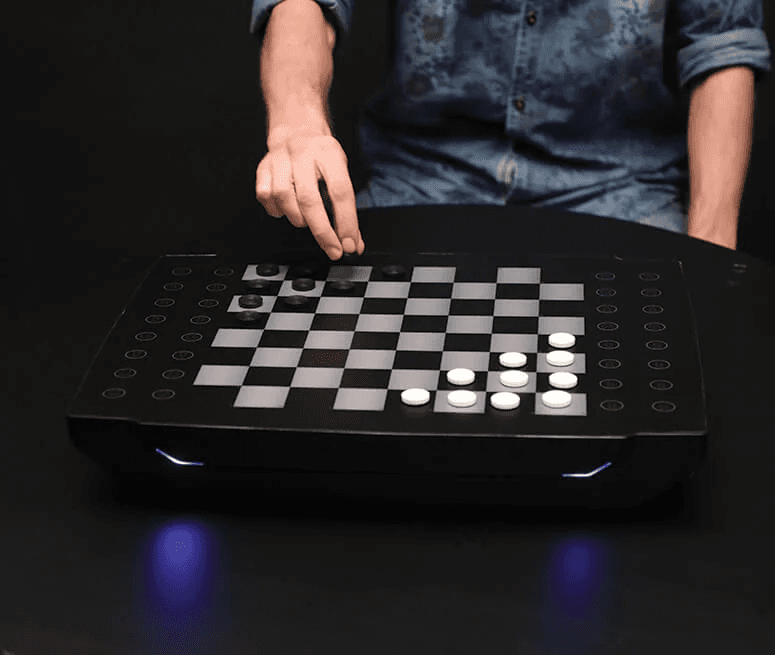
Swap
Rotating Board: Swap has a rotating board for dynamic two-player chess.
Interactive "Swap": It's known for its innovative "swap" mechanism, making chess more engaging.
Compact & Portable: Swap is space-saving and portable, suitable for various settings.
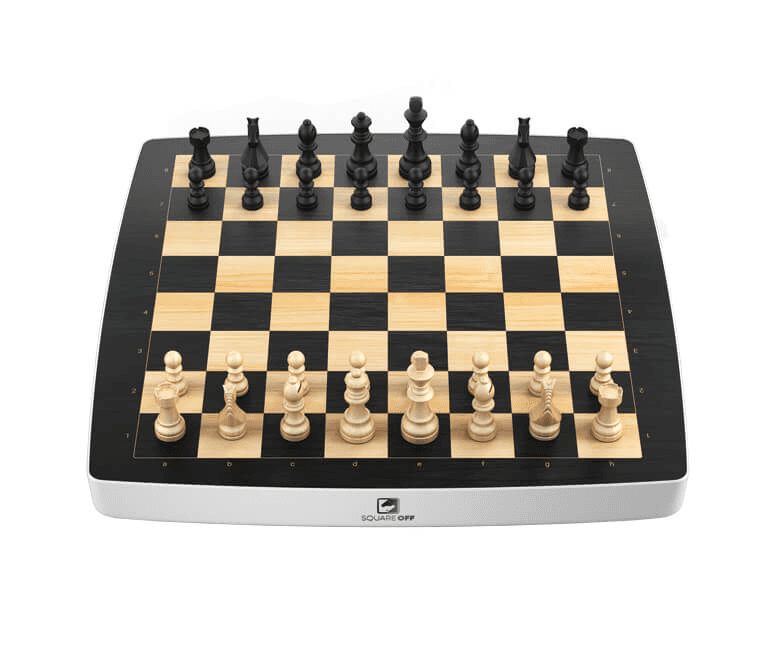
Neo Z
3D Chess: Neo Z offers a 3D chess experience with an elevated board.
Unique Design: It's known for its distinct, futuristic design, adding a modern twist to classic chess.
Strategic Gameplay: Neo Z challenges players with its unconventional board, encouraging new strategies.
What's happening in the market of interactive chess solutions?🤔
Join our stream of ideas
what makes our game different is
A life-sized chess board is a large-scale replica of the traditional game, played in an open space where players physically move the chess pieces, creating an interactive and immersive experience.
The chess board is interactive for the user as it provides illuminated hints for the three best moves of each piece, fostering engagement and strategic thinking during gameplay.
It board offers a unique and immersive experience, allowing players to physically move and interact with the game, fostering teamwork, enhancing strategic thinking, and making chess more enjoyable for players of all ages.
It offers interactive guidance with illuminated tiles: green for 1st best move, yellow for 2nd, and red for 3rd, enhancing player experience and strategic decision-making.
The tile elevates the destination tile of the first best move when the chess piece is picked up, to motivate the user ,adding excitement and enhancing the player's experience.
Life-sized
Interactive
The engaging chess board lights up the tile of the first best move in green, and elevates the destination tile by 15%, enhancing player excitement and immersion in the strategic gameplay.
Engaging
But why?
How?
To what extent?

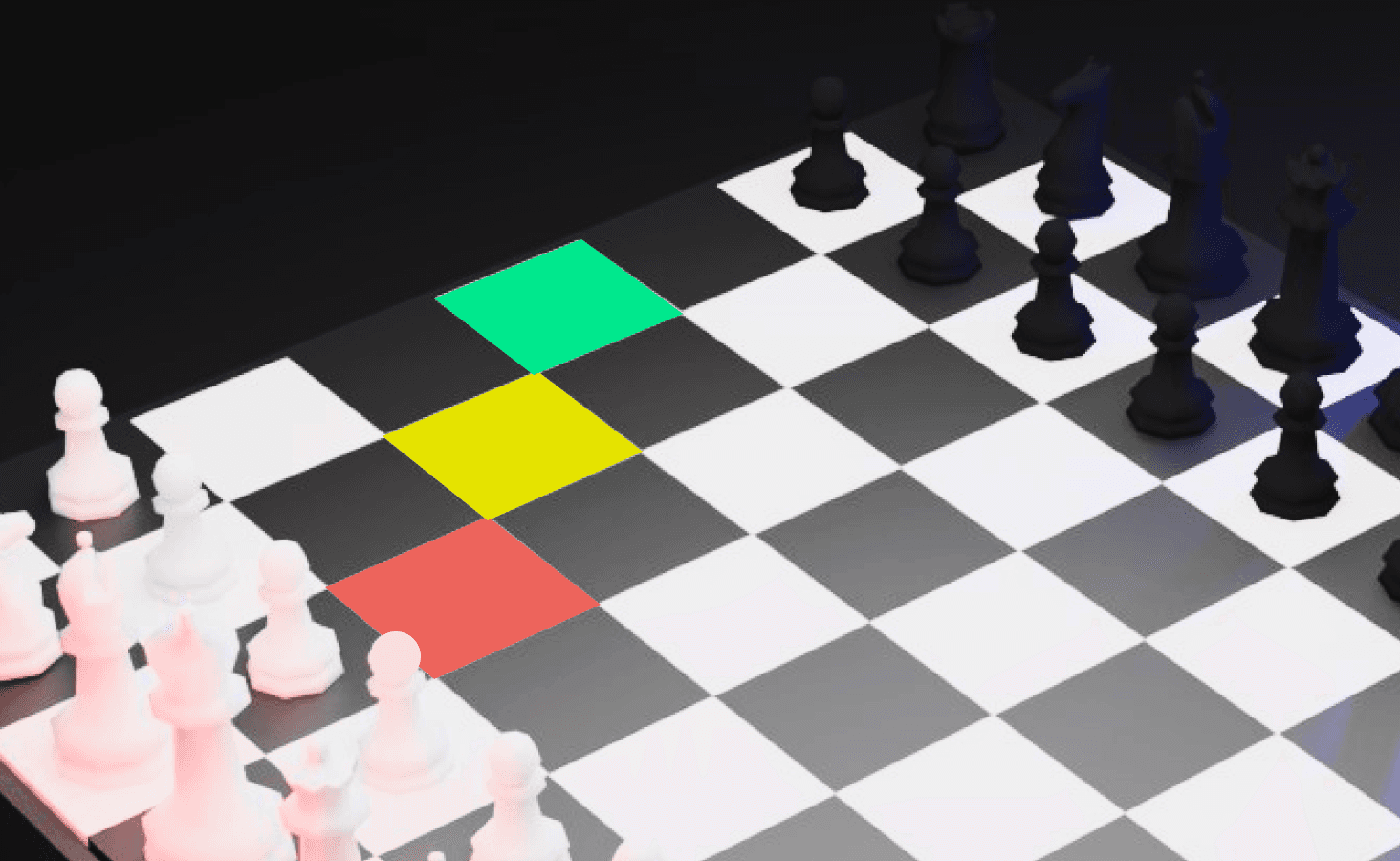
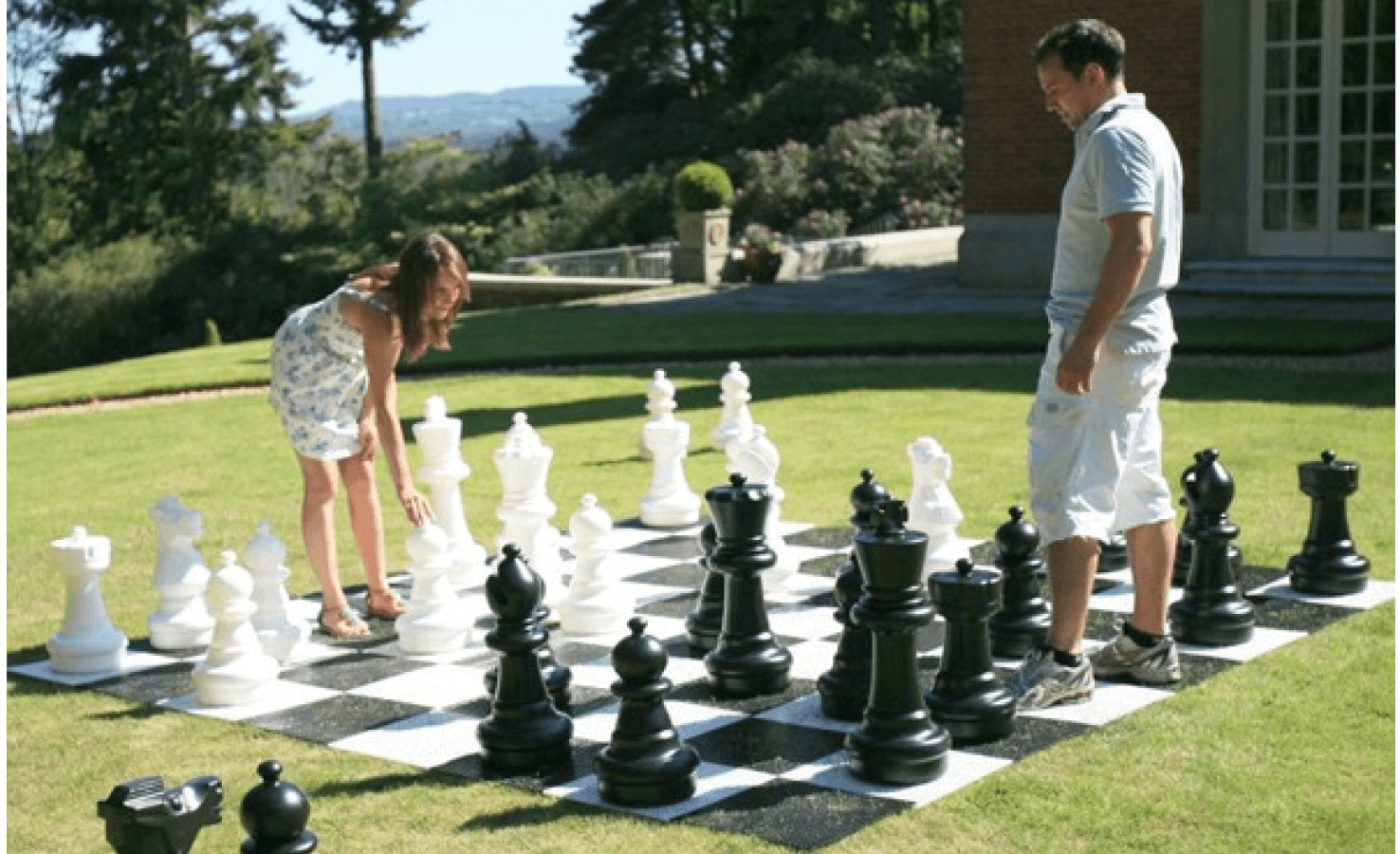
"Here's the scoop on how the game is played.👻

"CHECKMATE" is an incredible chessboard that uses advanced technology and is designed to help kids become chess experts. It goes beyond just playing chess; it's like entering a big chess world. It helps beginners and experts not only become better at chess but also improve how they think and strategize, making them smarter in many ways. It's a fun and educational tool for kids to learn and grow.
Here’s the story of our game
😁
This is the ideal state of the board
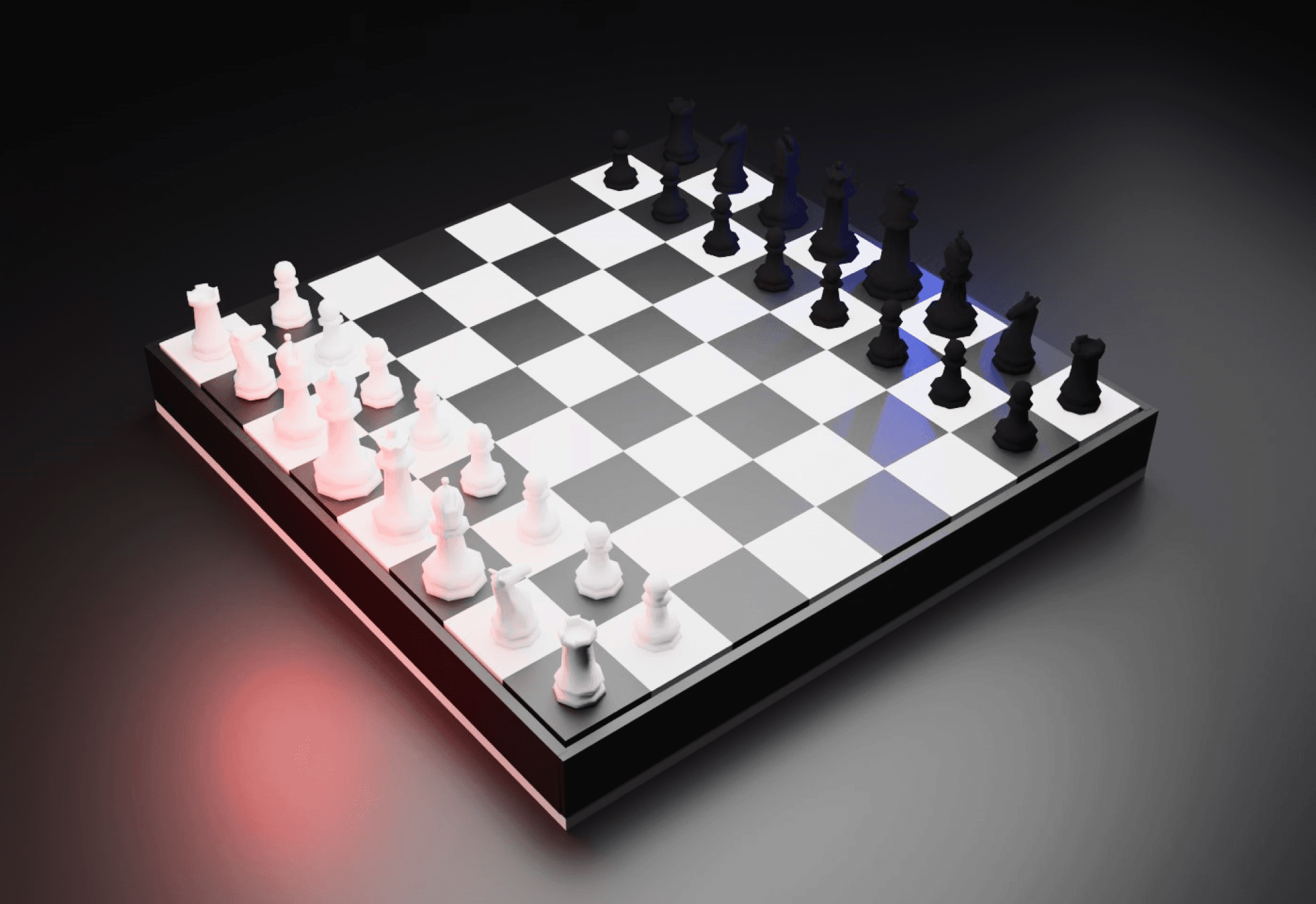
After a player lifts a piece, the board will guide the player by indicating the destinations (i.e final tile) of the 3 best probable moves for that piece in the given state of the game with the help of LEDs.

Tiles with,
-Third best move will be lit up in in RED
-Second best move will be lit up in in YELLOW
-First best move will be lit up in GREEN

The GREEN tile will be ELEVATEED to give a clear glimpse of the first move.
It’ll be the player’s decision what to move further with

As soon as the player will make the move , the elevated tile will go down and LEDs will go off, indicating that it’s other player’s turn.
What are the advantages of this game ?
🤓
IMMERSIVE LEARNING
With the help of technology (IoT), our large chessboard creates an immersive and personalized way for beginners to learn. It provides instant feedback and guidance to make learning chess fun and effective.
ANALYTICAL SKILLS
Playing on a life- sized chessboard helps beginners get better at thinking and planning, making them understand the game's complexities by actually doing it.
GEOMETRICAL UNDERSTANDING
When players think about their moves and picture them, they also start to understand how things relate to each other on the board. This helps them think in abstract ways and improves their math skills, which can be useful in other areas beyond chess.
SPATIAL AWARENESS
The huge chessboard's big size helps players get better at understanding where things are on the board and how to plan their moves, making them better at the game.
ENJOYABLE LEARNING JOURNEY
Using technology and a giant chessboard makes learning chess fun for beginners. When they move the pieces themselves, it makes them really excited and feel more connected to the game, making learning a lot of fun.
A sneak peak into our process
🤓


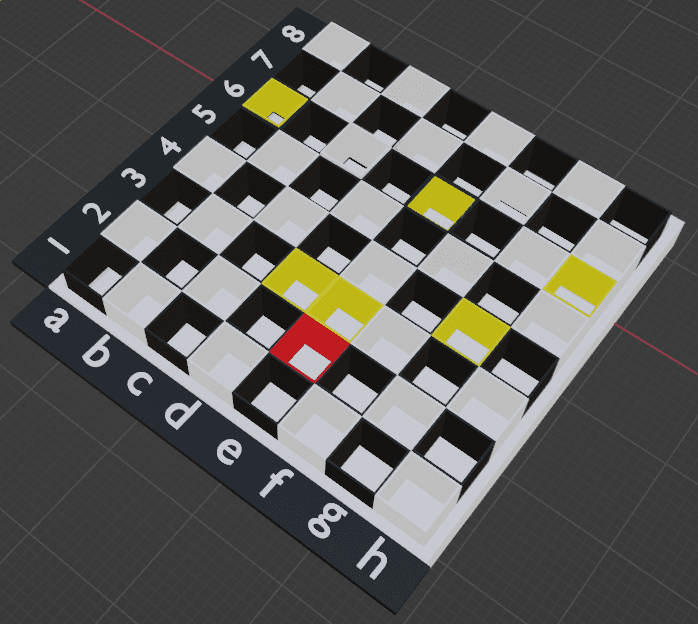
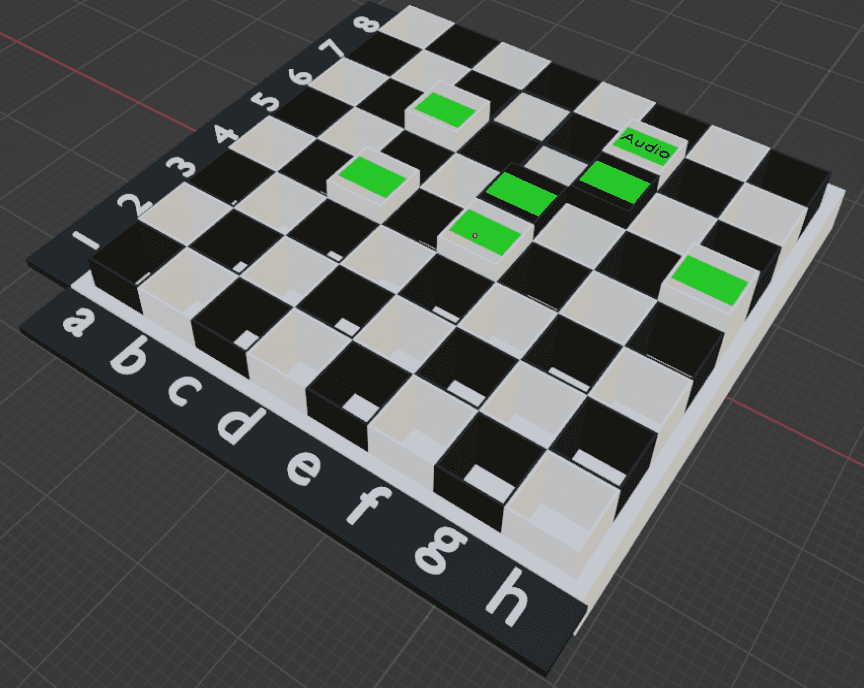
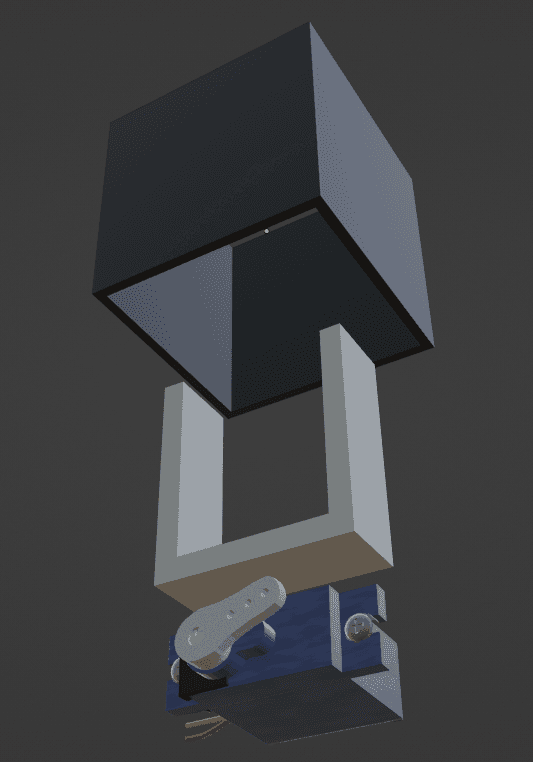
01
Renders using 3D Blender software to get a head- start
02
Since this was a pretotye of the concept, only a specific game was coded keeping in mind the practical limitations of the project
Coding a particular game
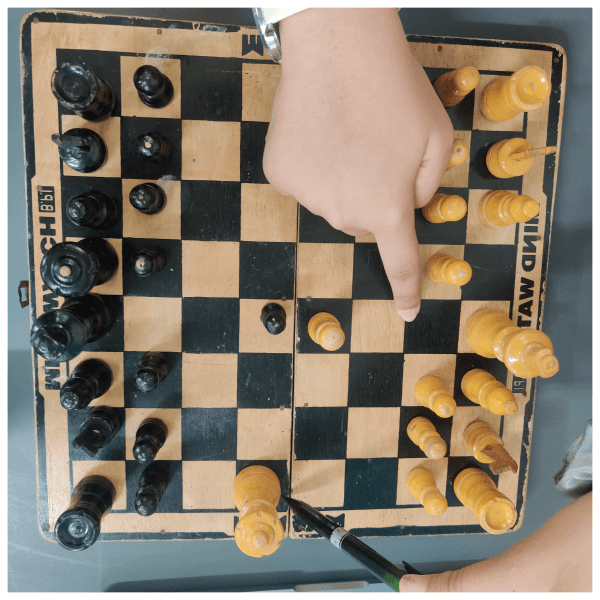
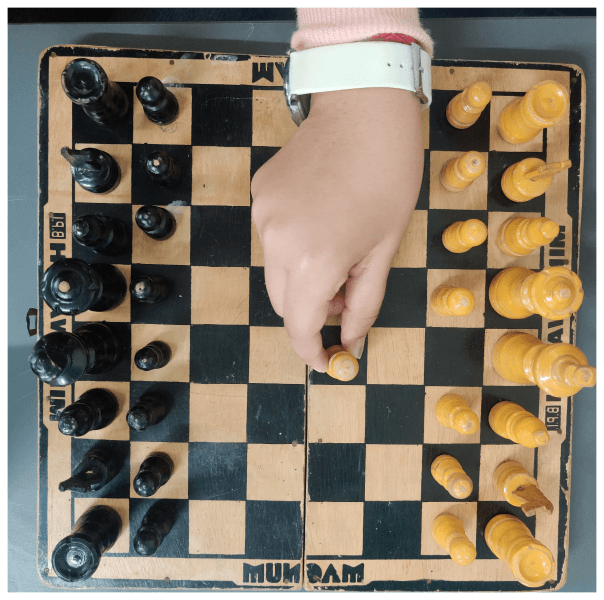
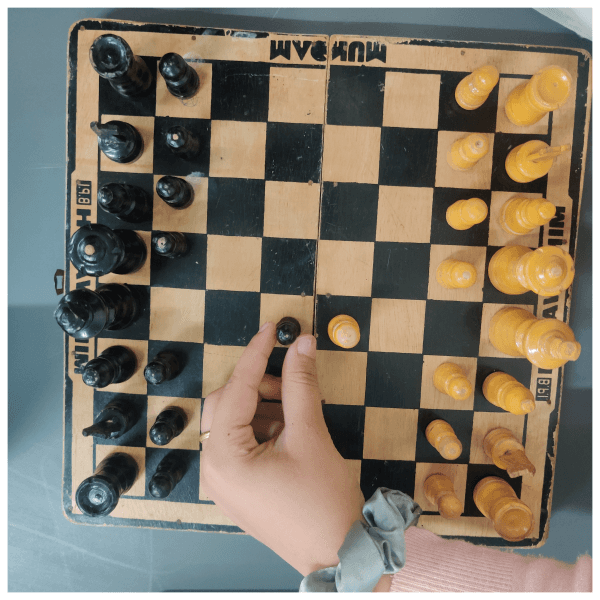
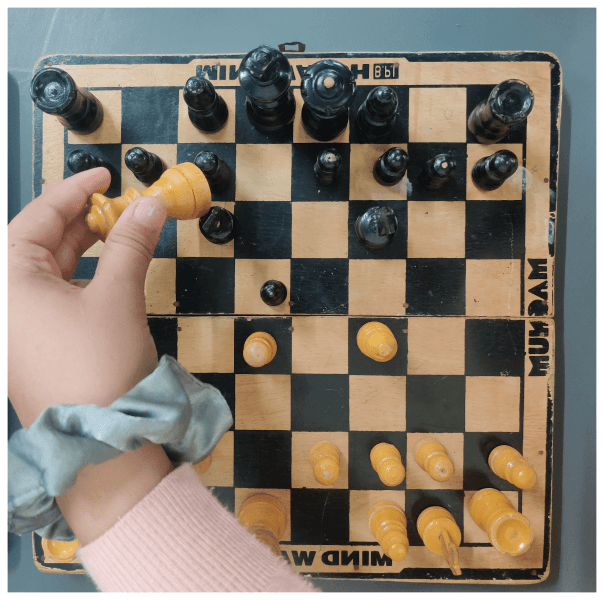


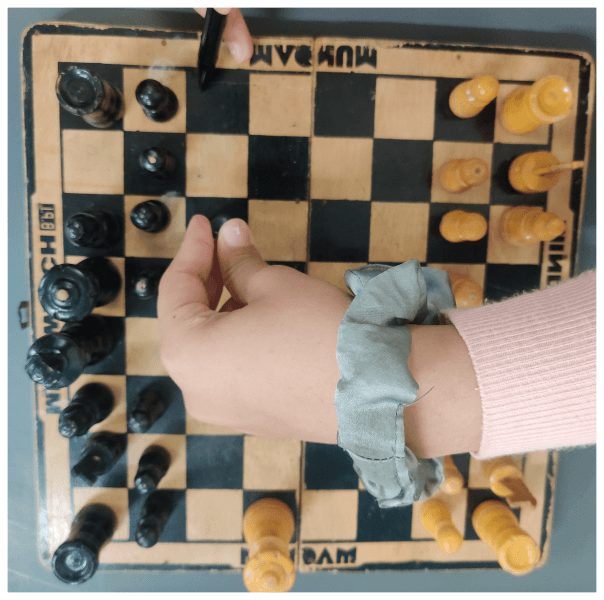
03
Making the model
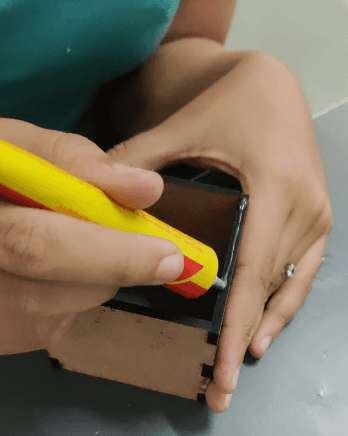
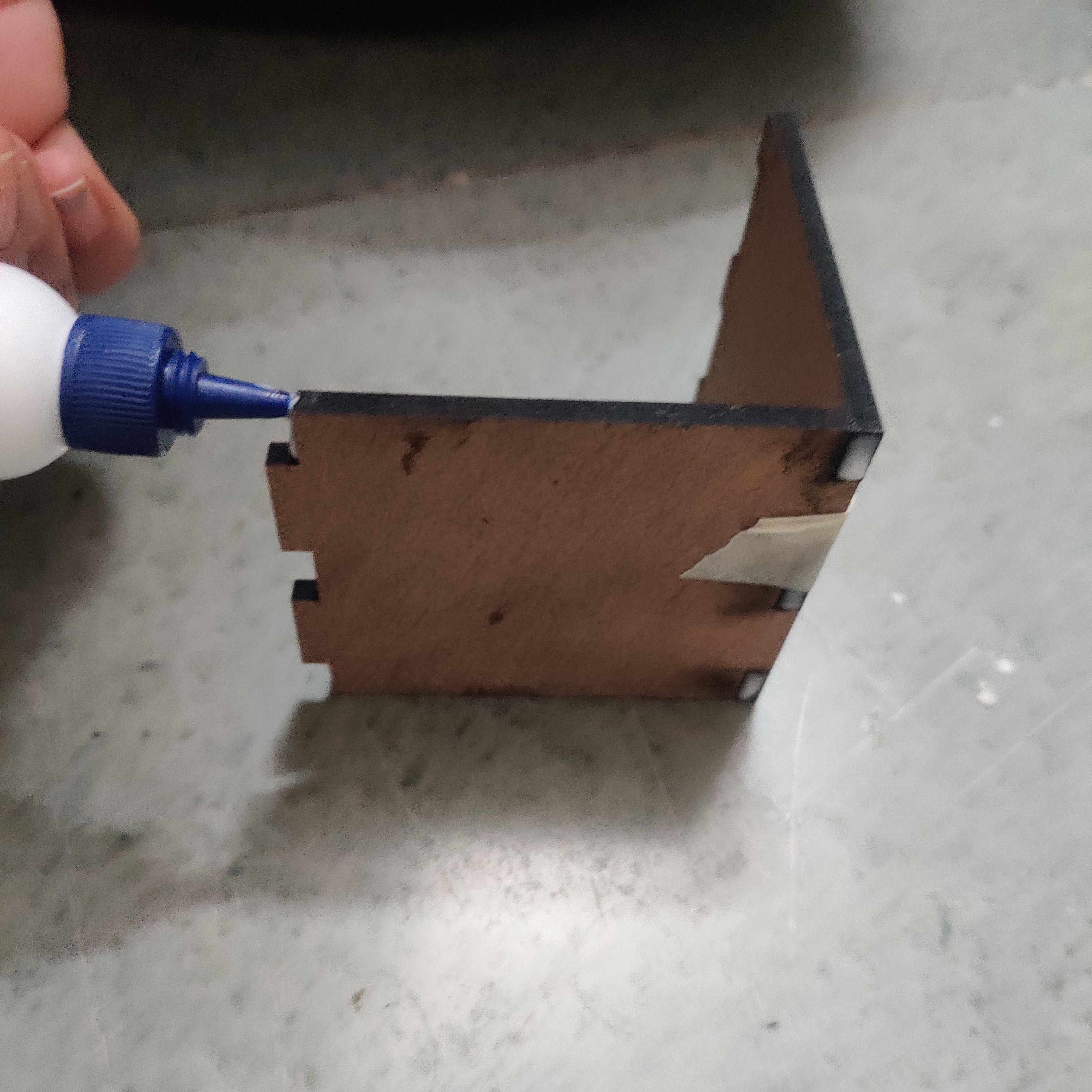
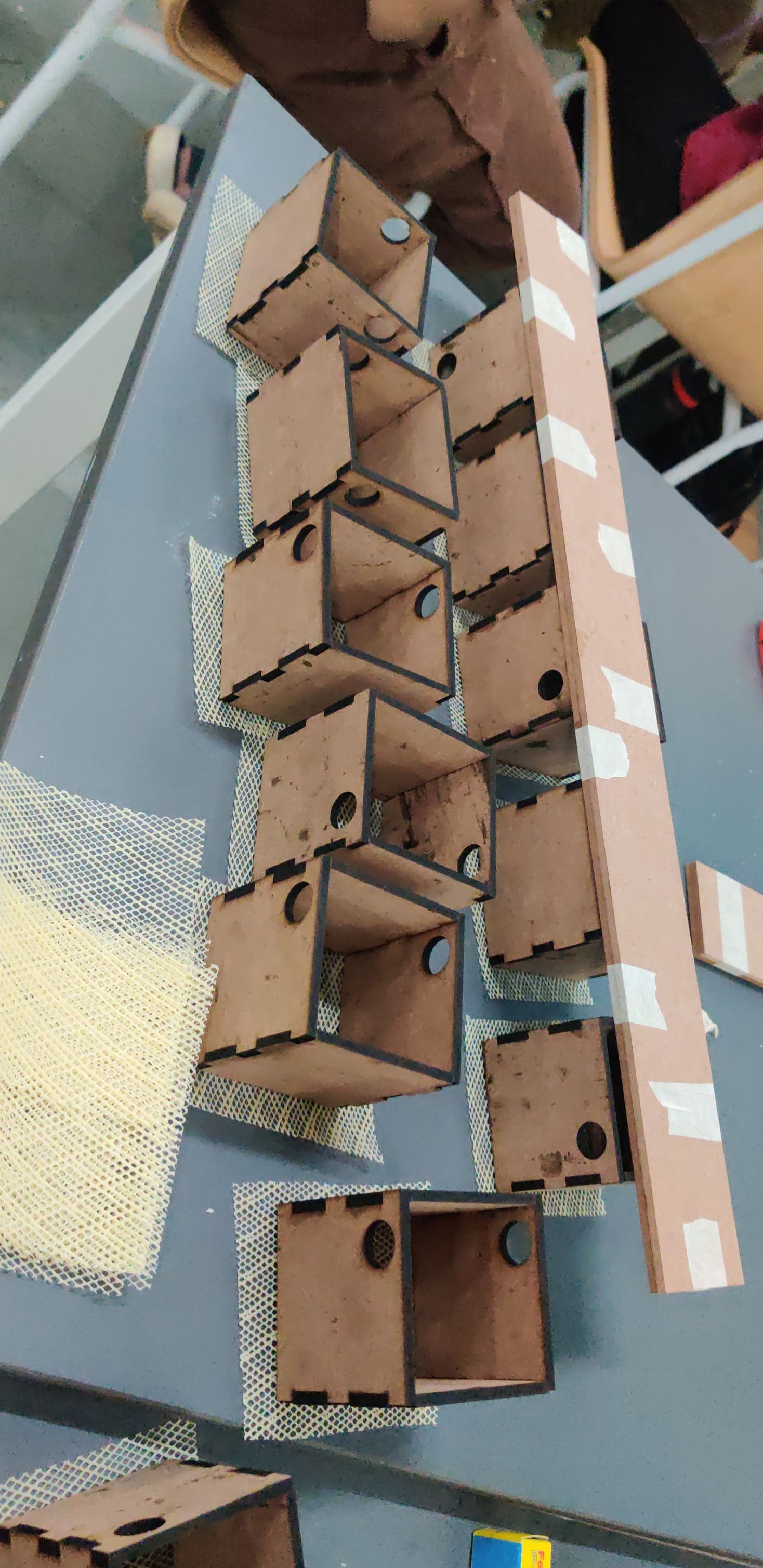
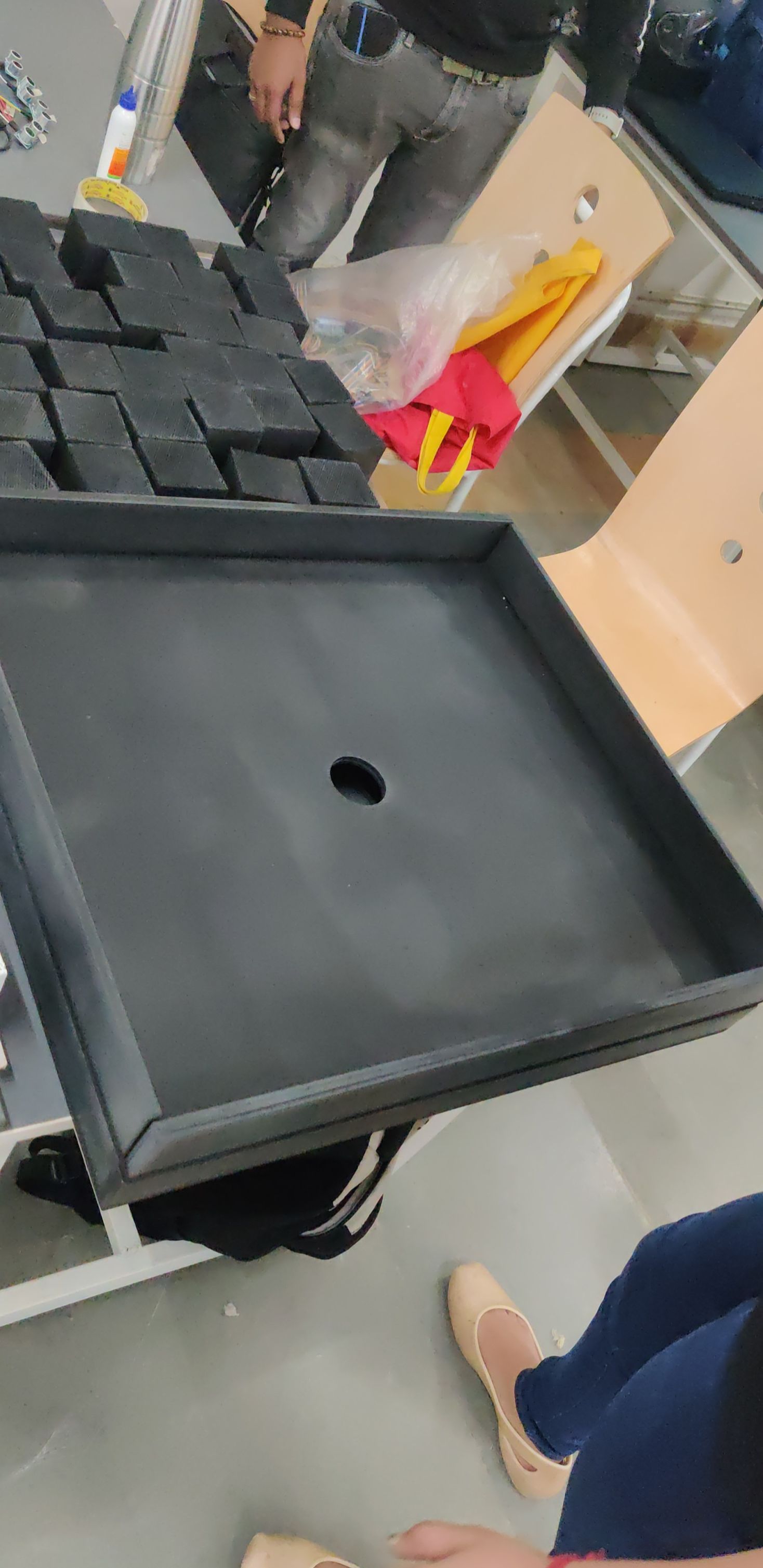
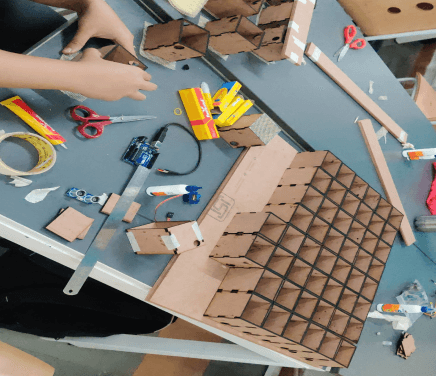
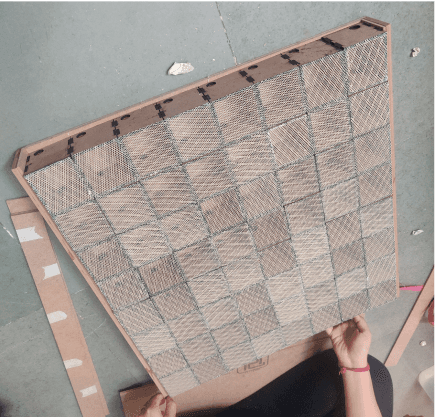
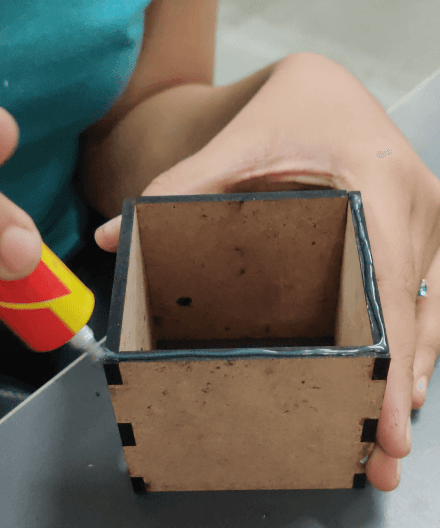
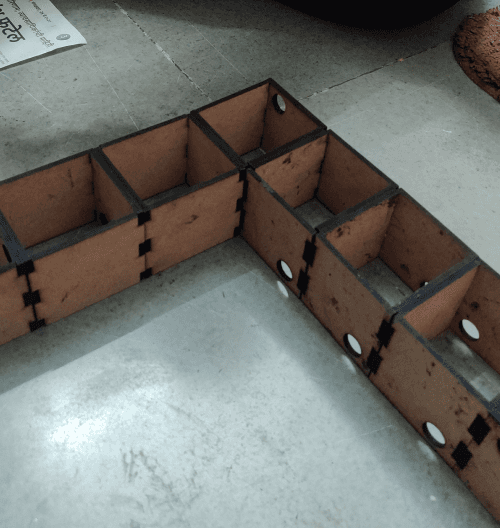
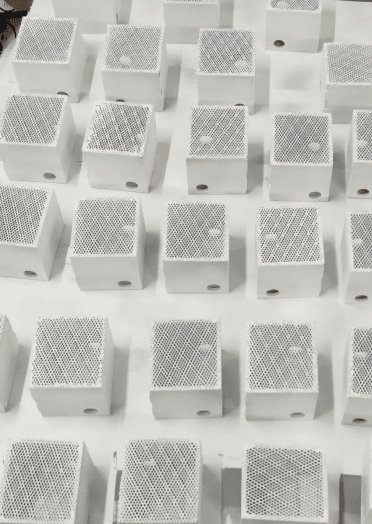
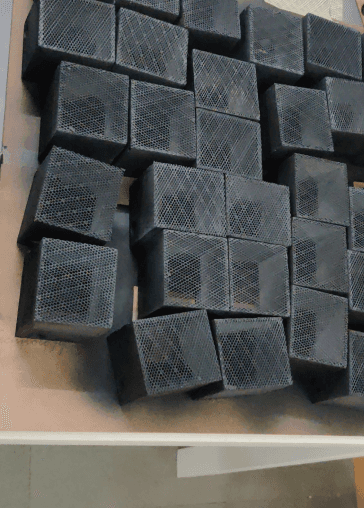
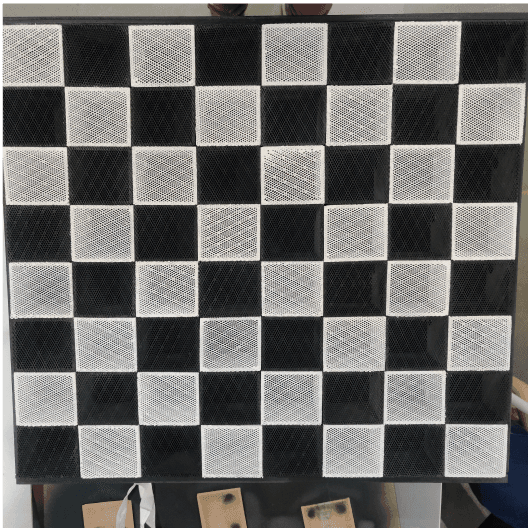
04
The mechanism
Shown here were the components used, namely
Arduino Mega, Wires, 14 Ultrasonic sensors, 7 servo motors, LED lights (7 green, 1 red, 6 yellow), 2 breadboards, 14 Resistors, 25V capacitor.
A 800 line code was written on the Arduino ide software for the working of pretotype

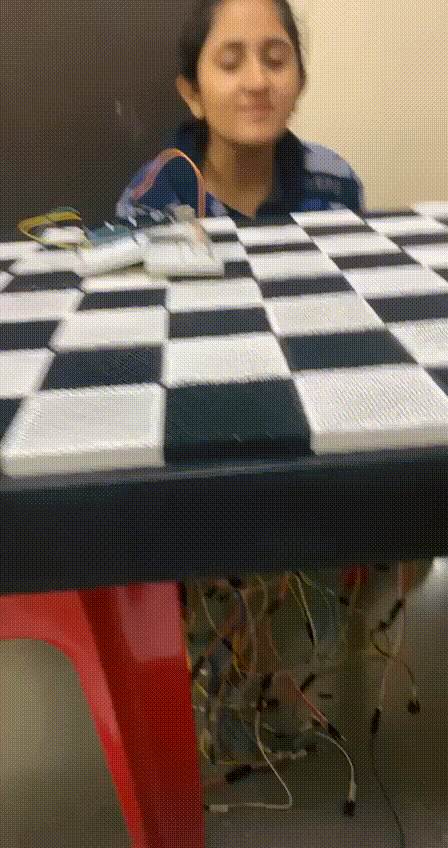

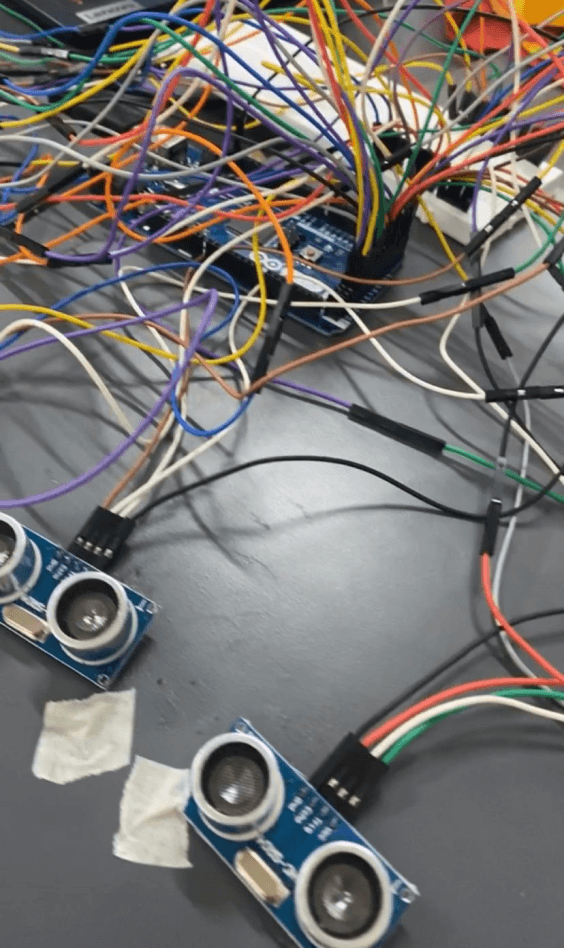
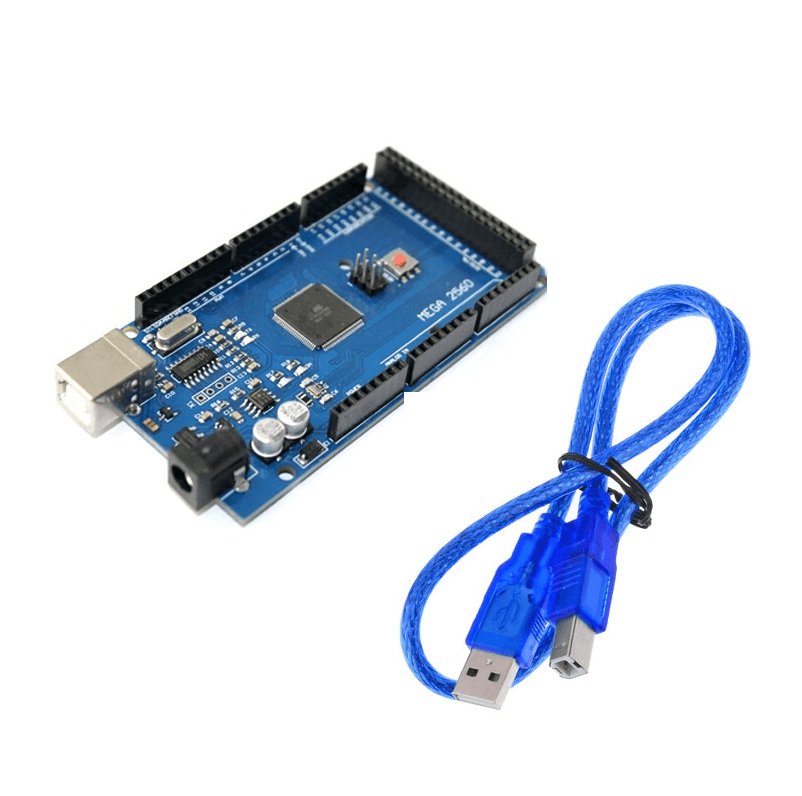
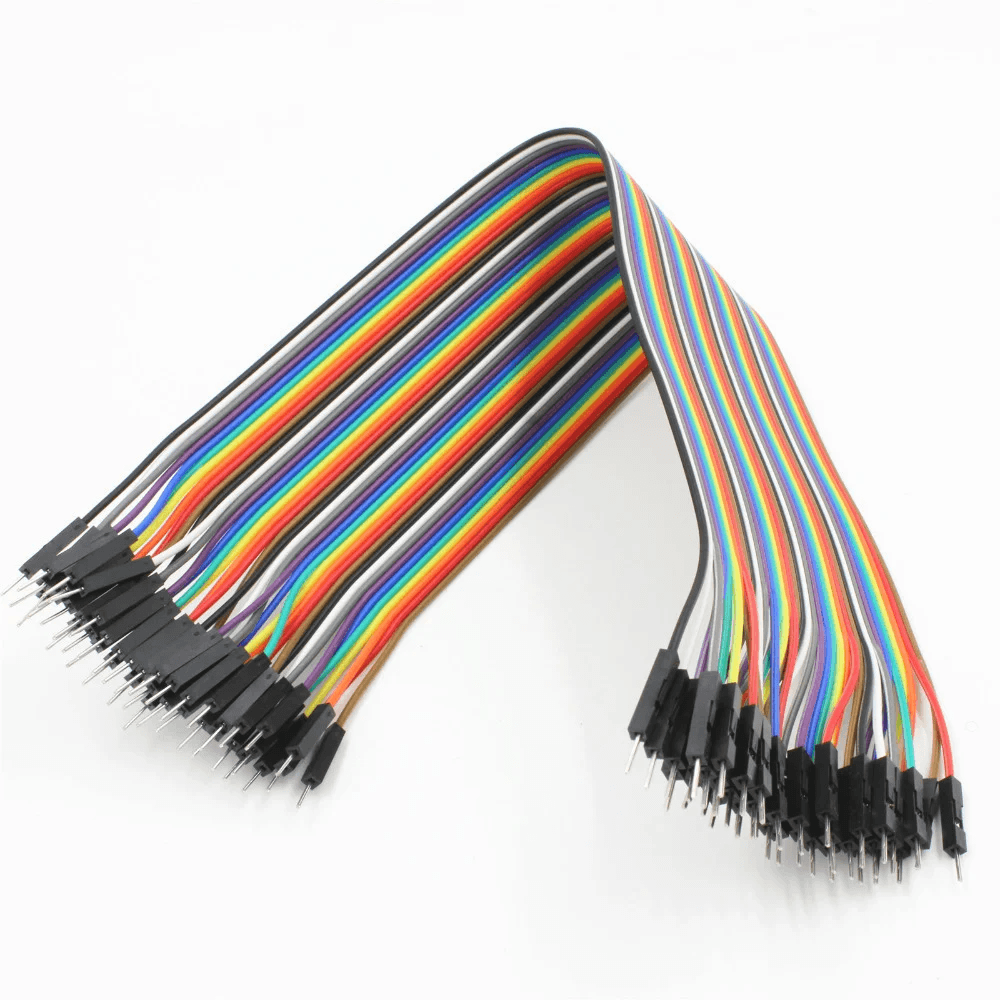
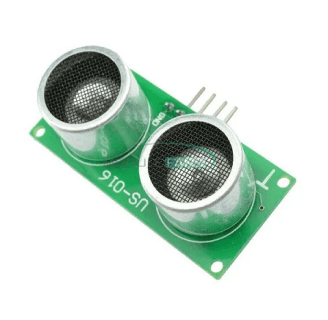


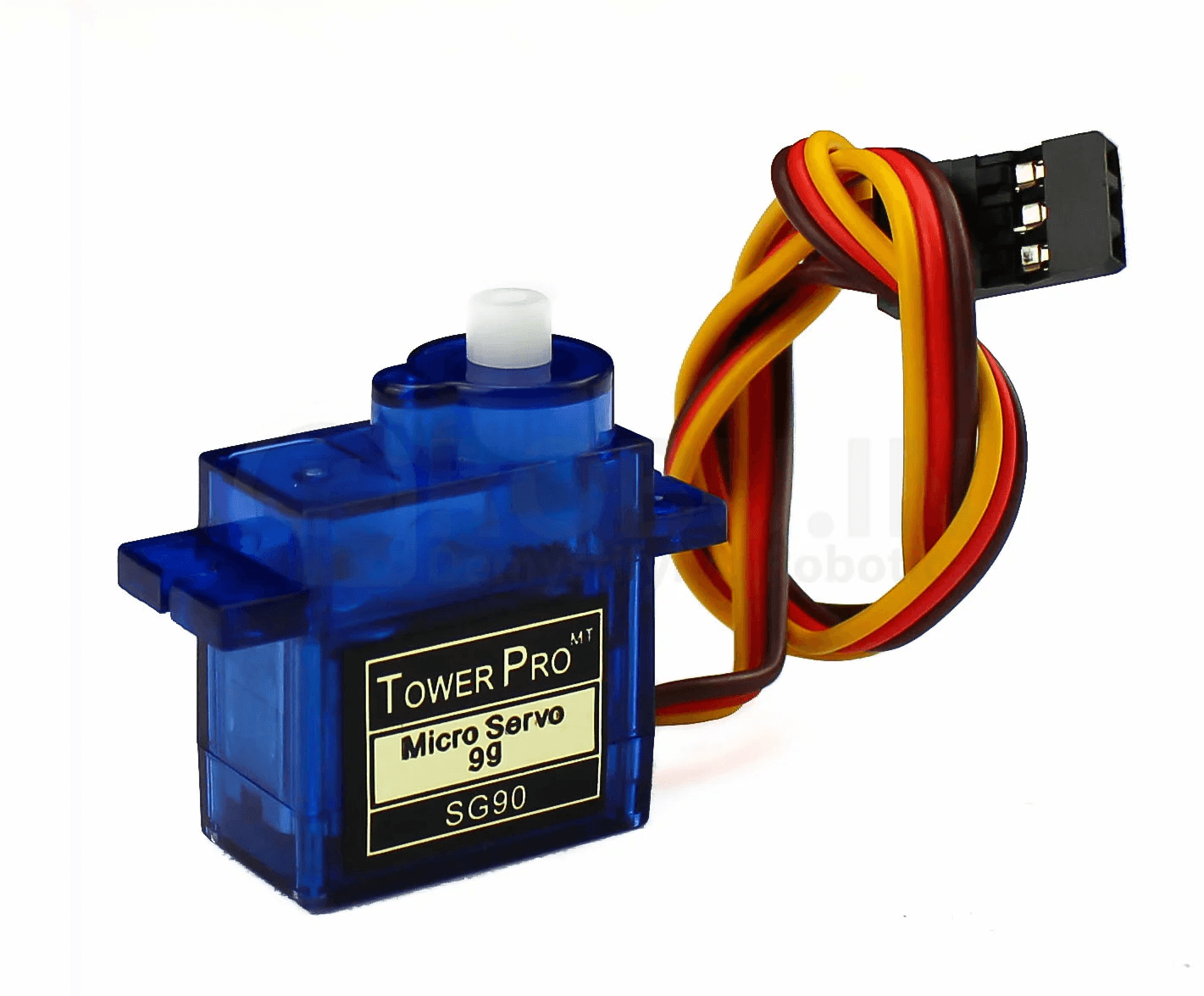

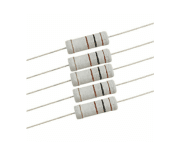
04
The mechanism
Shown here were the components used, namely
Arduino Mega, Wires, 14 Ultrasonic sensors, 7 servo motors, LED lights (7 green, 1 red, 6 yellow), 2 breadboards, 14 Resistors, 25V capacitor.
A 800 line code was written on the Arduino ide software for the working of pretotype
05
Final Model
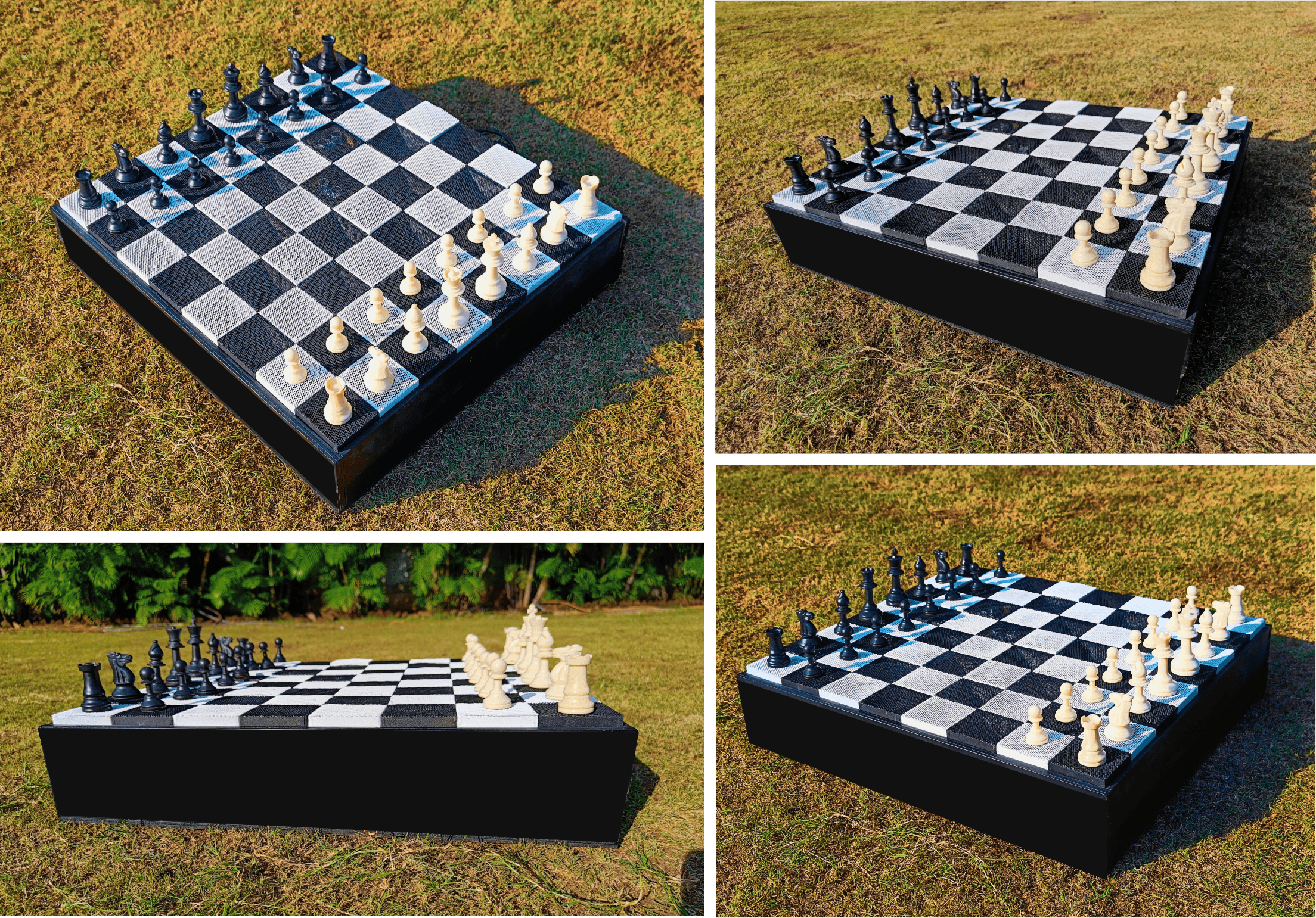
Next Step?
Looking ahead, we envision expanding the Checkmate project to reach a broader audience and diverse demographics. Further research and development can unlock new functionalities and interactions, making the chess-playing experience even more enriching and captivating. We are excited about the potential of tangible interactive gaming and the role it can play in fostering learning and personal growth. 🙌
Scalability Challenges: Scaling IoT and tangible interactions may encounter logistical and technical challenges, constraining broad adoption.
Cost and Complexity: It may raise costs and complexity, limiting accessibility for some users.
User Learning Curve: Novice players might require time to adapt to the unique interactions, affecting initial user engagement and usability.
Hardware Dependencies: The project's success heavily relies on stable and efficient hardware components, leading to potential maintenance and reliability issues.
Skill Level Differentiation: Designing interactions suitable for players of varying skill levels might be challenging, requiring thoughtful balance.
Things to consider
We explored the chess game
We enhanced the experience, while crafting moves
And finally we elevated the the best move
We designed the game
Now understood our journey?
😁
Summary of the process 🫣
We wrote a research paper on this project titled "Checkmate: An IoT integrated tangible chess board", and it got accepted for inclusion in an upcoming publication, Smart sensors for industry 4.0: Fundamental, Fabrication and IoT Applications by Wiley publications
Checkmate transcends the boundaries of traditional chess experiences. By combining IoT technology with innovative learning techniques, we've created an immersive journey that captivates users of all ages. Whether you're a novice player seeking to master the game or a school student yearning for a thrilling puzzle, Checkmate welcomes you to a world where chess meets the future. ♟️✨
Understanding the target audience's preferences and learning styles is crucial in creating an engaging and immersive experience.
Integrating IoT technology into traditional games can enhance user interaction and create unique user experiences.
Beginner-friendly resources and interactive tutorials are essential in catering to novice players and easing the learning curve.
Visual elements and real-time feedback can significantly improve user engagement and satisfaction.
Creating a sense of wonder and excitement through innovative design elements can elevate the overall user experience.
Things I learnt
What did we achieve from this project?